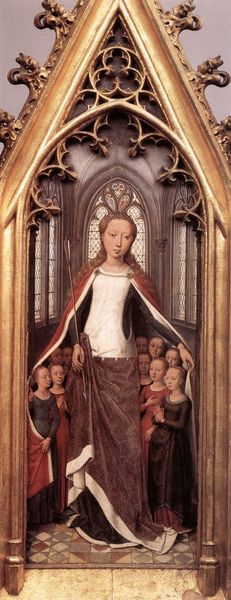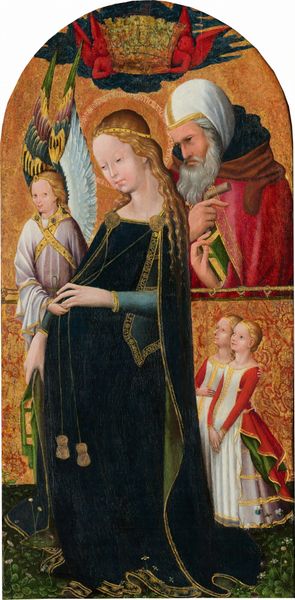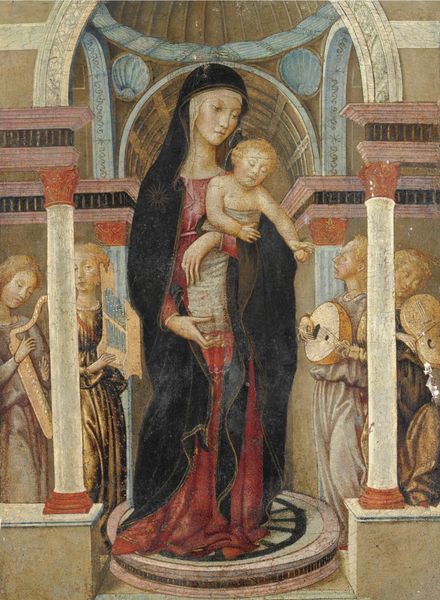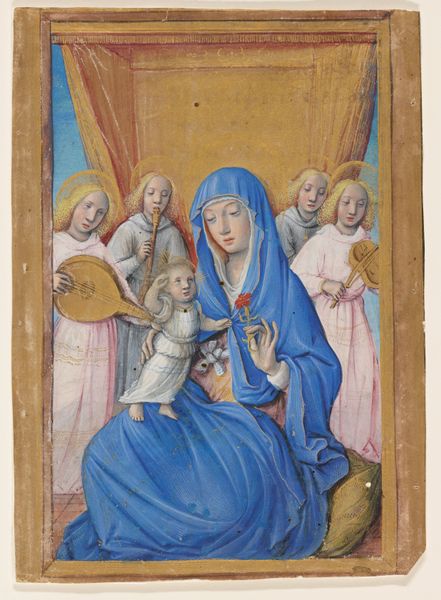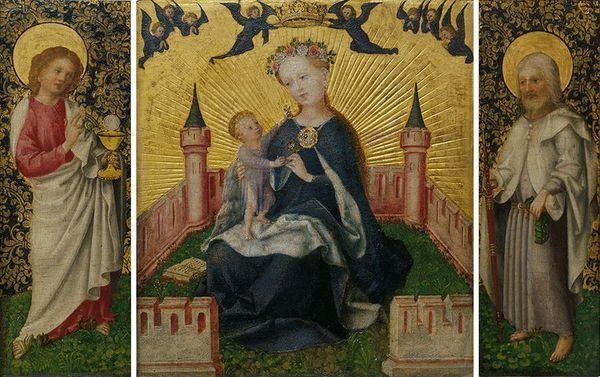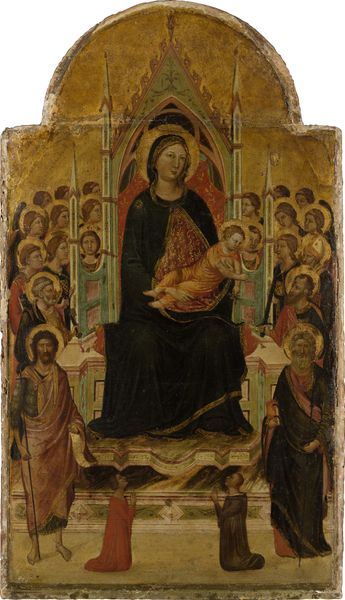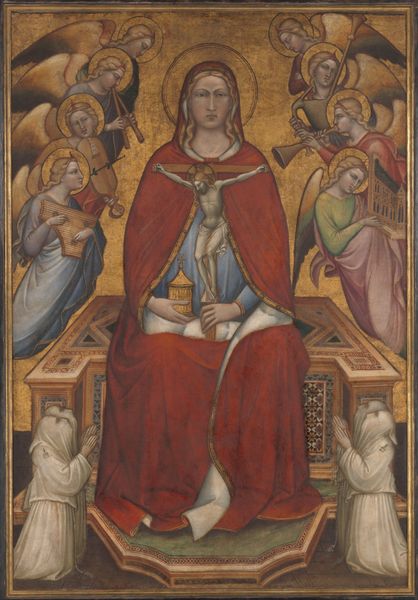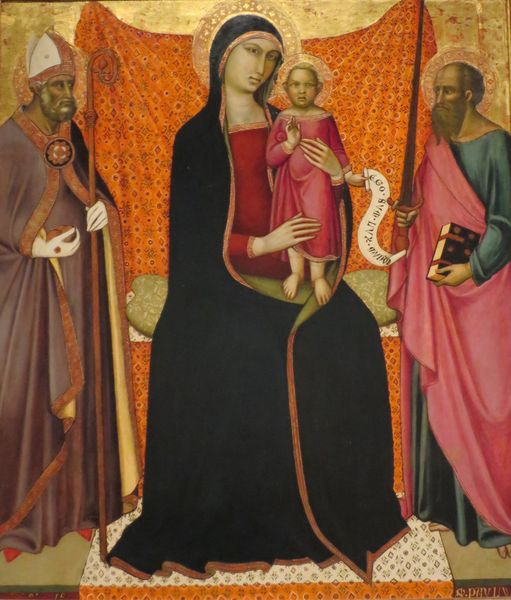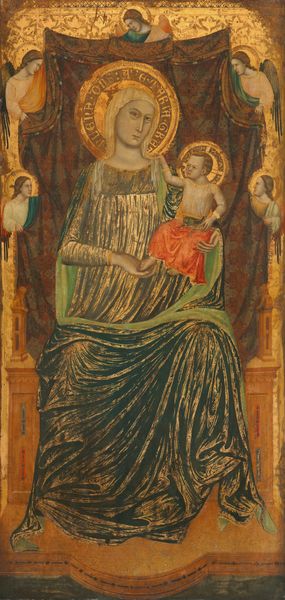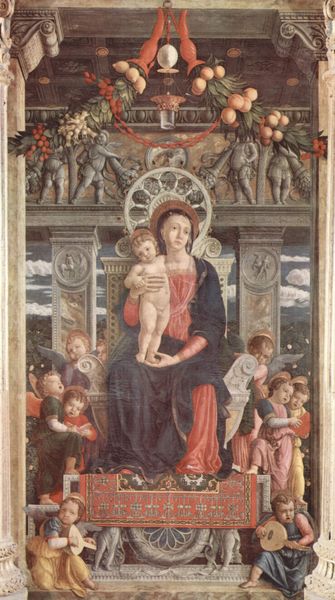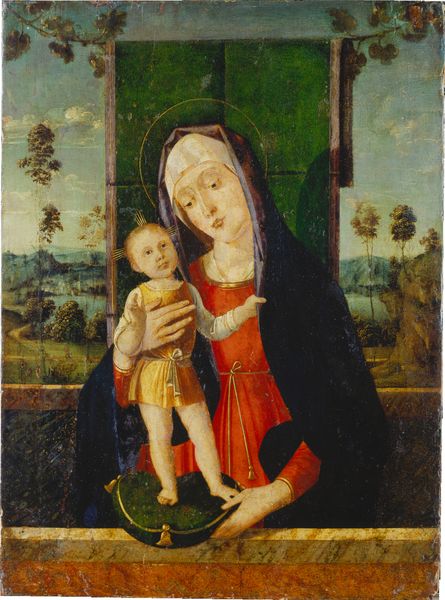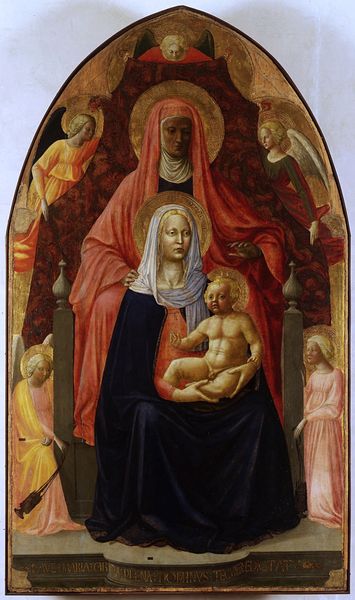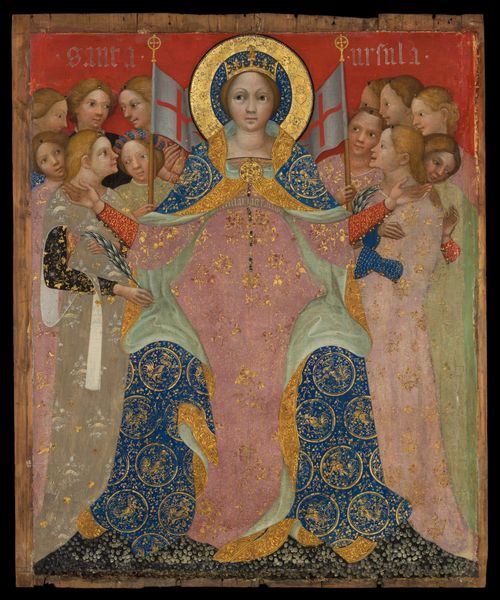
St. Ursula and her companions, from the Reliquary of St. Ursula 1489
0:00
0:00
hansmemling
Memling Museum (Old St. John's Hospital), Bruges, Belgium
panel, painting, oil-paint
#
portrait
#
panel
#
painting
#
oil-paint
#
figuration
#
oil painting
#
history-painting
#
northern-renaissance
#
portrait art
Dimensions: 45.5 x 18 cm
Copyright: Public domain
Curator: Ah, this panel. St. Ursula and her companions. It's part of the Reliquary of St. Ursula by Hans Memling, painted around 1489. Look closely, it’s oil on panel, isn’t it sublime? Editor: The first thing that strikes me is the hushed, almost ethereal quality of it. There's a tranquility about the scene, despite the impending tragedy implied by the story of St. Ursula. The way the light filters through the gothic windows in the background…it’s a bit melancholic, no? Curator: Exactly! Memling had such a way with light and colour. The piece narrates the story of St. Ursula's pilgrimage, culminating, alas, in her martyrdom, along with her 11,000 virgin companions, purportedly slain by the Huns. Can you imagine?! Though, frankly, I don't always get bogged down with history when looking at art… Editor: Well, it's impossible to divorce this work from its historical context. It reflects the anxieties of the late 15th century – anxieties around gender, religion, and political turmoil. Ursula is not simply a saint; she's a symbol of female solidarity in the face of patriarchal violence. Even though this tale, some say it may not be an actual fact and Ursula's companion count was wrongly writen on some Medieval Calendar, there were only XI virgins... Not 11,000! Curator: Oh, you and your political violence theories. Jokes aside, Memling manages to balance this intense historical narrative with an overwhelming grace and sweetness. See the tenderness in their faces? There’s something so soft, and still very human and kind about it, you know? That’s the real appeal. The quiet dignity of it all! Editor: That quietness you admire can also be seen as a form of submission, no? They're passive figures, waiting for their fate. The question of agency – who controls their narrative, who dictates their lives – is ever present. How their bodies became sites of struggle… The image evokes some somber truths. It is rather unsettling! Curator: But that's also what's so captivating. It provokes discussion! Even disagreement. Isn't that the core essence of art at the end? What I take from Memling's talent for color, composition, and the way the figures interact within this tiny jewel-box panel creates this… dreamy tableau that's more reflective than declarative, wouldn't you say? Editor: Perhaps that tension is its lasting legacy – that blend of beauty and violence, devotion and oppression, that sparks introspection, after all. It reminds us of the narratives, of what it takes to get here. It asks us to challenge power and systems through a simple art frame.
Comments
No comments
Be the first to comment and join the conversation on the ultimate creative platform.
